Chasing the storm
It is half past three in the morning on one of the last nights of October. Storm Babet is raging and most people are trying to sleep through the sound of the wind, but coastal researchers at LTH are wide awake. Strong winds combined with high water levels are a warning sign for communities on the south coast of Skåne, and that’s where the researchers are heading, to the heart of the action.
Jessika Sellergren – Published 21 December 2023
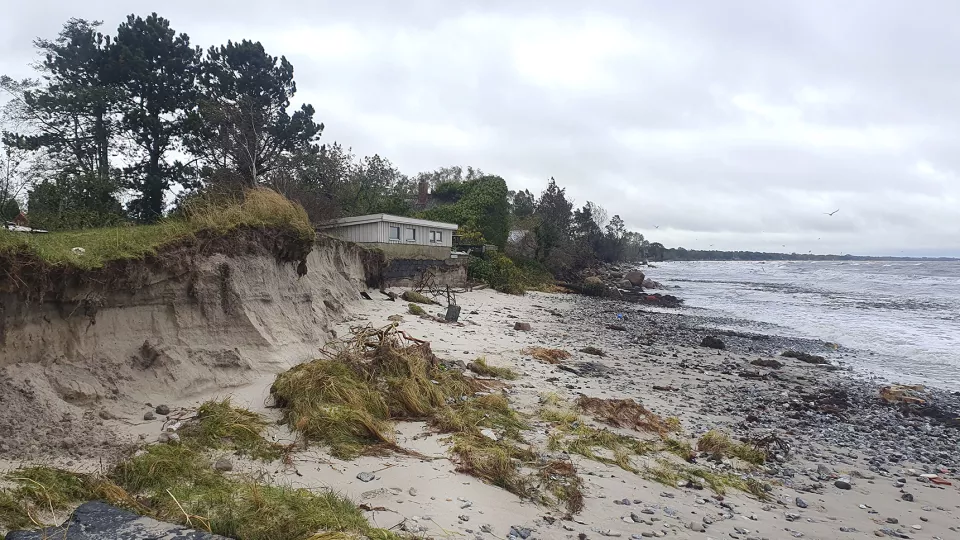
They are hesitant to call themselves “storm chasers”, but Björn Almström’s and Caroline Hallin’s work is driven by the pursuit of storms and their aftereffects. They conduct research on coastal regions and develop methods to provide information on how future storms could affect these communities.
Observing the process on the ground and following what happens – as it happens – is essential to gaining that knowledge.
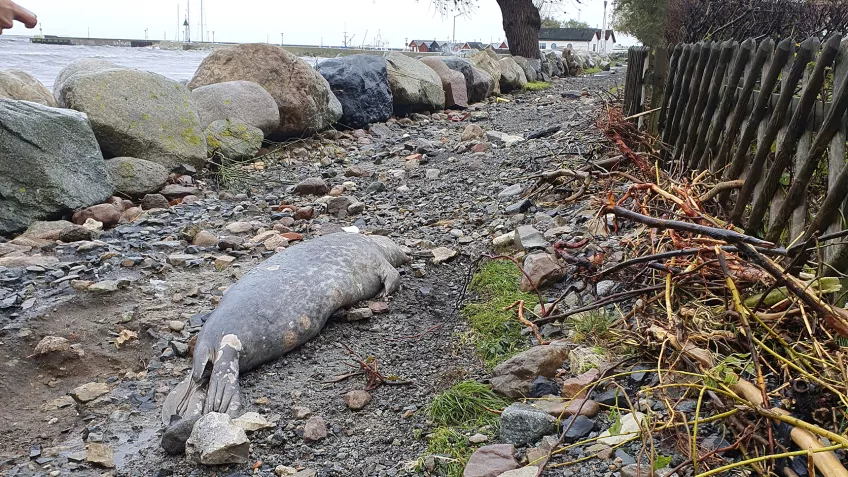
A seal washed up on land by the storm. Photo: Caroline Hallin
As they arrive on the south coast, they find roads have been undermined and washed away, large boulders from the seabed have been thrown up onto land, buildings have collapsed and are floating out to sea, and a seal is lying on a footpath near the water.
Despite the clear impact of the storm, Babet did not turn out to be as severe as first feared.
“Actually, the wind speed and water levels were not that extreme. But the combination of high water and waves led to erosion on a scale not seen for decades in this area,” says Caroline Hallin.
Computational models
The researchers combine satellite data with their own measurements to evaluate computational models.
“The more storms we observe and measure, the more accurate our models become,” says Caroline Hallin.
Despite analyses showing significant risks of erosion and flooding along the coast of Skåne, measures to tackle these issues are being postponed. One of the reasons, explains Björn Almström, is that the last storm often becomes the reference point when planning coastal defences.
“If the latest storm didn’t cause extensive damage, it creates a feeling that there is no great need for action,” he says.
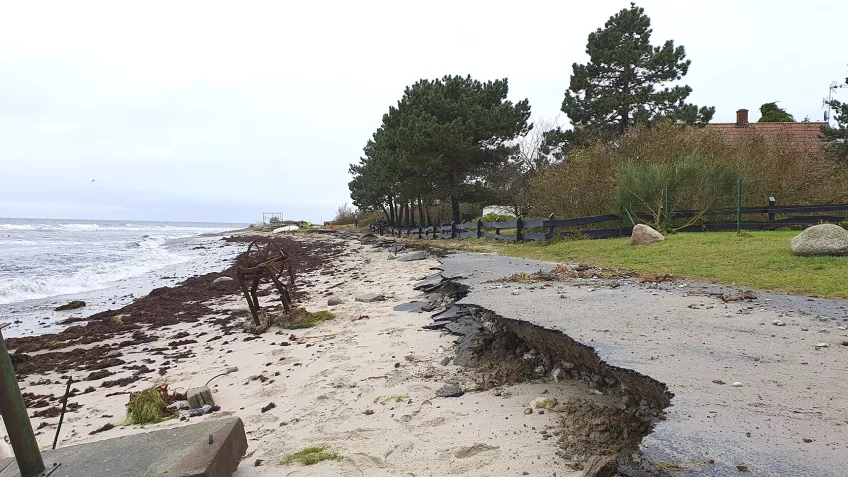
This road did not escape the fury of the storm. Photo: Caroline Hallin
To gain insight into how future storms may affect the coast, more storms than the most recent one need to be considered. Historical data must also be included in the computational models, the researchers explain.
To contribute to the development of coastal protection, LTH researchers collaborate with municipalities, industry and various other community stakeholders. However, it is not easy to decide on protective measures when several perspectives have to be reconciled. Caroline Hallin explains that the conservation of the natural environment must be balanced with social, economic and political aspects.
“Wherever possible, nature-based solutions should be used. For example, existing sandy beaches and dunes can be reinforced by transporting sand to eroded areas, known as beach nourishment. This provides coastal protection that also has significant value for nature and recreation. However, in some places, this solution is not possible, in which case a man-made embankment with specially selected vegetation may be the best solution.”
An experimental embankment
A project is underway to plant different plants on an experimental embankment in Falsterbo to gain knowledge about which types of vegetation are most resistant to storm surges. Once the plants have taken root, the embankment will be exposed to waves using a simulator.
“Traditionally, grass is used on embankments. The resistance of grass to waves is well known, but it offers a low level of biodiversity,” says Björn Almström.
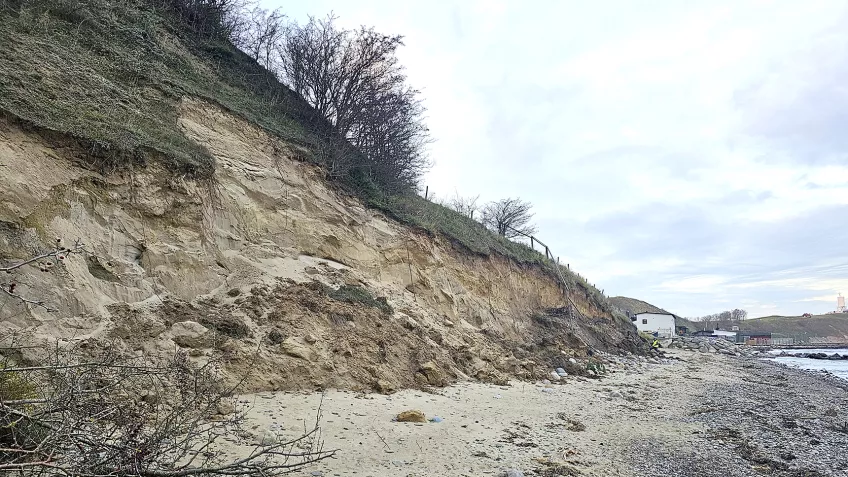
An eroded beach. Photo: Caroline Hallin
How well other vegetation resists the impact of waves is not yet clear to researchers.
“In general, sparsely planted vegetation provides poorer protection, but at the same time, if this sparse vegetation is composed of varying species, this increases both biodiversity and resistance to drought, for example,” says Björn Almström.
The day after their nighttime excursion, the researchers are back on the beach.
“Just as we observe the storm as it happens, we follow how quickly the dunes are rebuilt by nature. This allows us to better understand the resilience of natural coastal defences,” says Caroline Hallin.
Research on Water
LTH’s profile area Water addresses how to ensure water quality, how to ensure sufficient water resources, the impact of climate change and what constitutes sustainable water management in different climates.
Björn Almström and Caroline Hallin are coastal engineers and researchers in water resources engineering at LTH. The research on coastal protection and storm surges, funded by Vinnova and EU-LIFE among others, also includes researchers from the Department of Biology and the Centre for Environmental and Climate Science (CEC).
Caroline Hallin is also the coordinator of the Pufendorf Institute for Advanced Studies’ theme “Coastal Perspectives”, which explores novel approaches to accelerate society’s ability to deal with coastal erosion and flooding.
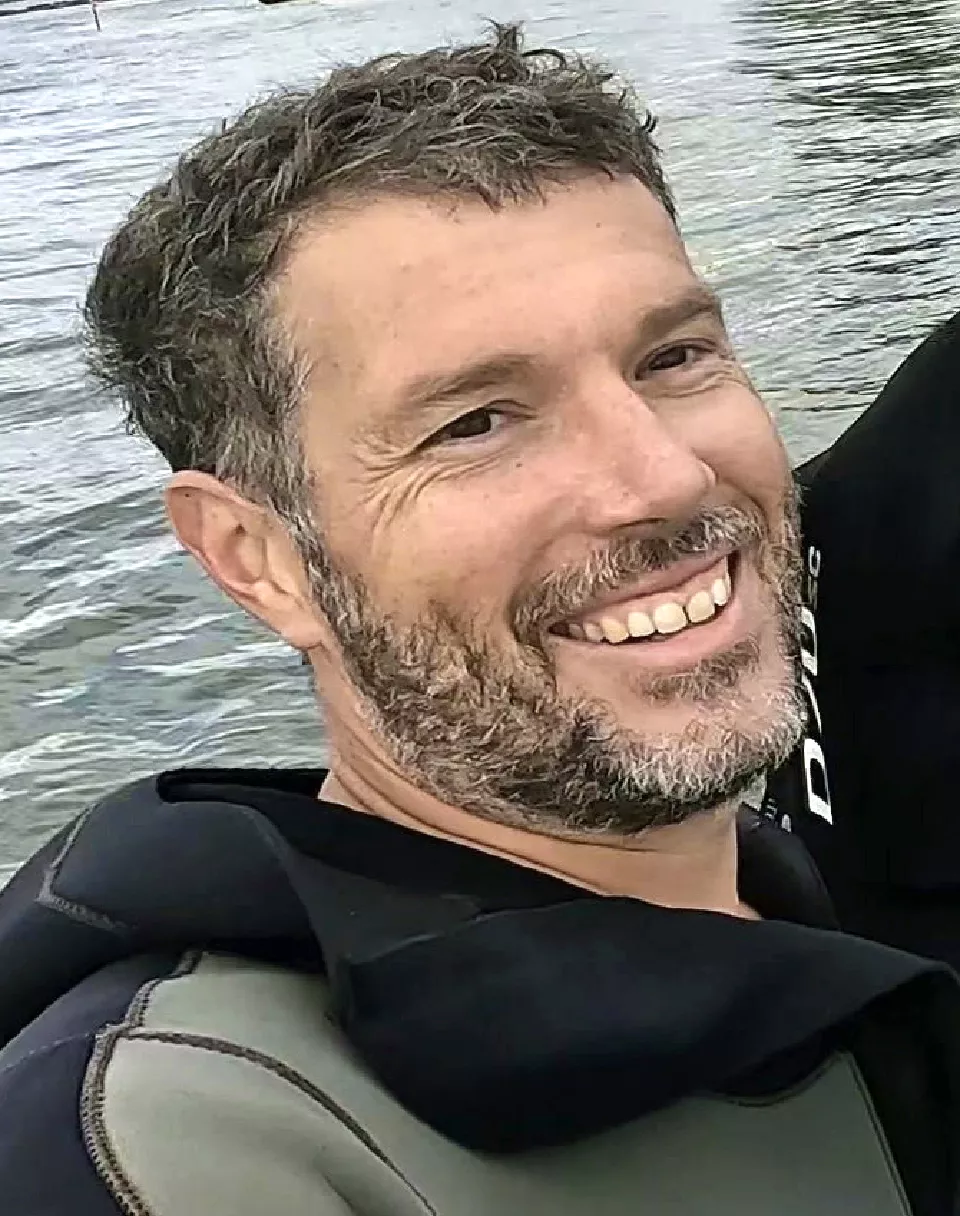
Björn Almström
Björn Almström is a coastal engineer and a researcher in water resources engineering at LTH.
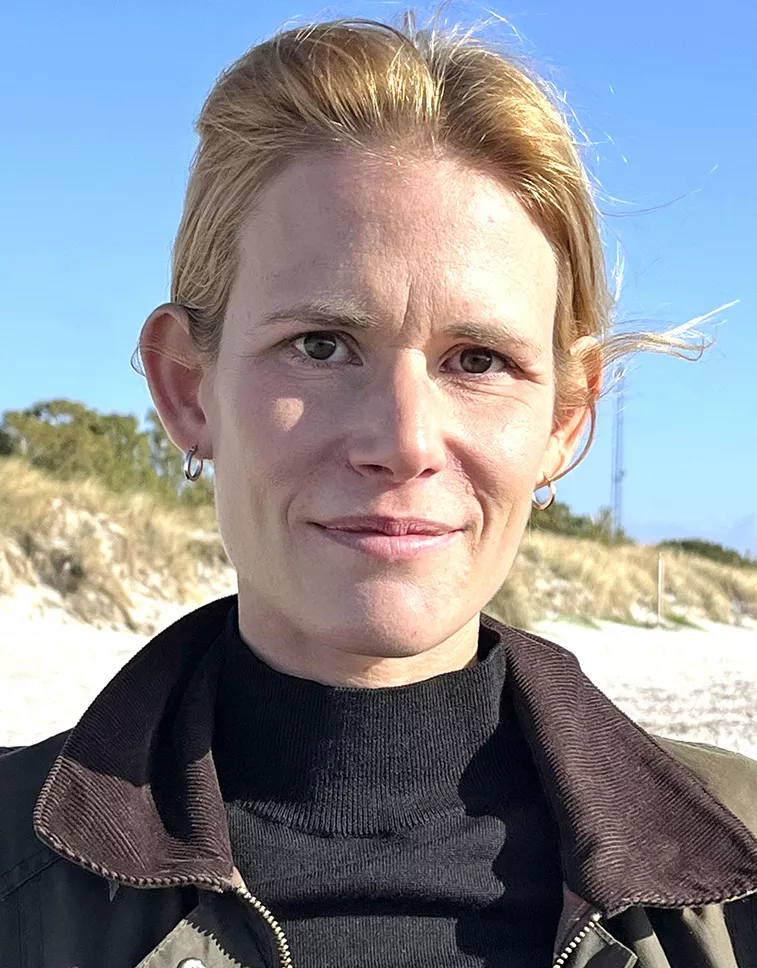
Caroline Hallin
Caroline Hallin is a coastal engineer and a researcher in water resources engineering at LTH.
